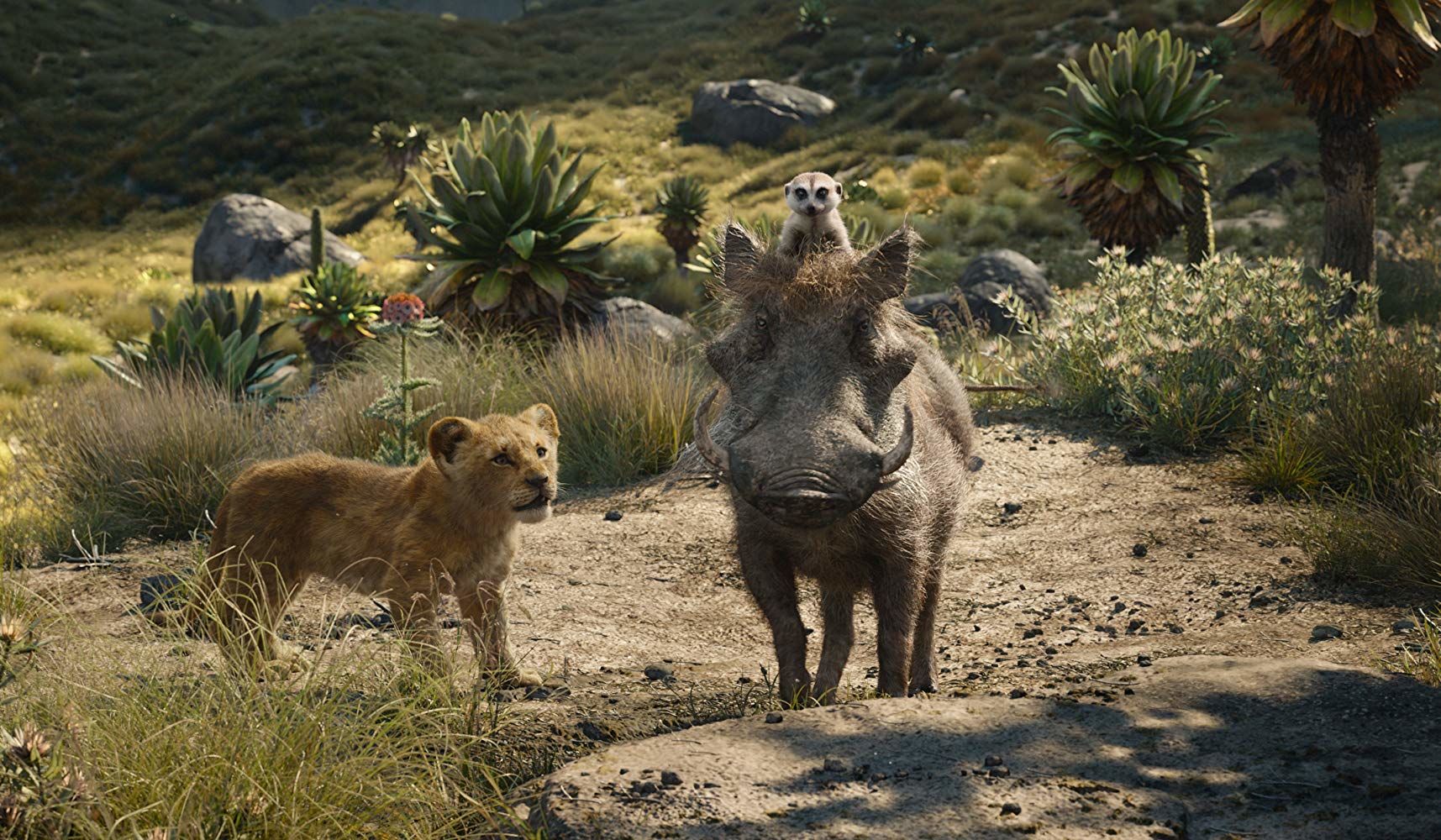Create a free profile to get unlimited access to exclusive videos, sweepstakes, and more!
Sorry, Simba would eat his friends Pumbaa and Timon, a lion expert explains

In both Disney's original 1994 animated version and its 2019 remake of The Lion King, the young lion prince Simba's new life begins the moment he meets the wise-cracking meerkat Timon and joyful warthog Pumbaa. Upon finding Simba half-dead in the desert after he's run away from his dead father, with his evil uncle and hyenas hot on his tail, Timon and Pumbaa introduce Simba to the "Hakuna Matata" way of life.
In their world — one of harmless delusion and fart jokes — nothing really matters.
"When the world turns its back on you, you turn your back on the world," Timon tells a confused Simba in the original The Lion King. Not only does this mentality separate Timon and Pumbaa from their upsetting pasts, but it removes them from reality and all the inconvenient truths that come with it.
Like the fact that there's no way a lion cub could survive solely on bugs and grow to be a healthy adult.
"There's a very marked change in diet in carnivorous species at about 20 kg, which is about 45 pounds," Dr. Craig Packer, a professor of Ecology, Evolution, and Behavior at the University of Minnesota and Director of The Lion Center, tells SYFY WIRE. "So anything that weighs more than that really has to eat meat. So with Simba, if he pledges to [Timon and Pumbaa] to stop eating meat, that's not gonna work — it just won't work."
Citing a 1999 study in which scientists studied carnivores to see exactly how large they could grow when subsisting on an invertebrate diet (aka a bug diet), they discovered "a maximum sustainable mass of 21.5 kg" for those animals. In short: An animal that eats bugs can't get too big — carnivores need meat. Packer amends that the giant anteater, native to Latin America, can grow "up to 64 kilos," but that it's a rare contender for an animal that thrives, size-wise, on a diet of just ants.
Whereas the giant anteater and other animals that live on bugs alone are adapted to the task — sporting long tongues and teeth meant to grind up all the bits and pieces that come with bugs — lions aren't built for that.
"A lion doesn't have a sticky tongue," Packer says, laughing. "Not the kind of tongue you can stick 18 inches into a termite mound or anthill."
Packer also points out that animals who eat bugs are also often adapted to digesting those bugs. "Lions don't have that," he says. "They're like your cat. And your cat may eat the occasional cockroach, much to your unsettled response, but they're not going around eating bugs all the time as a food source."
Another marked divergence from reality is all the more apparent in the remake. While in the animated version it seems that Timon and Pumbaa are some of the only creatures inhabiting their lush little oasis, in the 2019 CGI remake, audiences get to see a bit more of Simba's time with Timon, Pumbaa, and their new bug-eating friends.
While there's something innately strange about watching a photo-realistic Simba slurp down a grub, the new film is all the odder when you see Simba tumbling about and play-fighting with his friends, all creatures that would normally be prey for a lion.
When asked if there were any chance a lion would ever befriend any of these animals or even consider not eating them, Packer laughs.
"Uh, no," he says. "The thing about lions — and I hate to say this about lions — but they're very destructive animals. I've seen them kill mongooses, I've seen them kill small birds; I've seen them kill things they don't eat. They just kill them to kill them."
Granted, he says, a lot of the time it's the younger lions that are "mucking around" and attacking something out of curiosity rather than aggression, but that really doesn't bode well for young Simba's friends. And even by the time Simba grows up (which would take about four years by lion growth standards, meaning that famous trunk-walking montage is one hell of a long walk), it doesn't change the fact that lions are wired for the hunt. While adult lions expend less energy on playing or exploring, that won't stop them from ravaging any and all animals that come their way.
"They'll kill cheetahs, they kill leopards, they kill hyenas — they'll kill each other," Packer says. "Any animal that sees a lion, it generally makes a very determined effort to get away from the lion."
The only animals that don't regularly stray from lions? Not meerkats or warthogs, but porcupines, which always approach lions butt-first to ward off any attack using their quills.
So while it's nice to think that Simba could have lived the "Hakuna Matata" lifestyle for years and found a new family for himself, just know that The Lion King, in reality, would have ended about halfway through with a bloodbath.



























